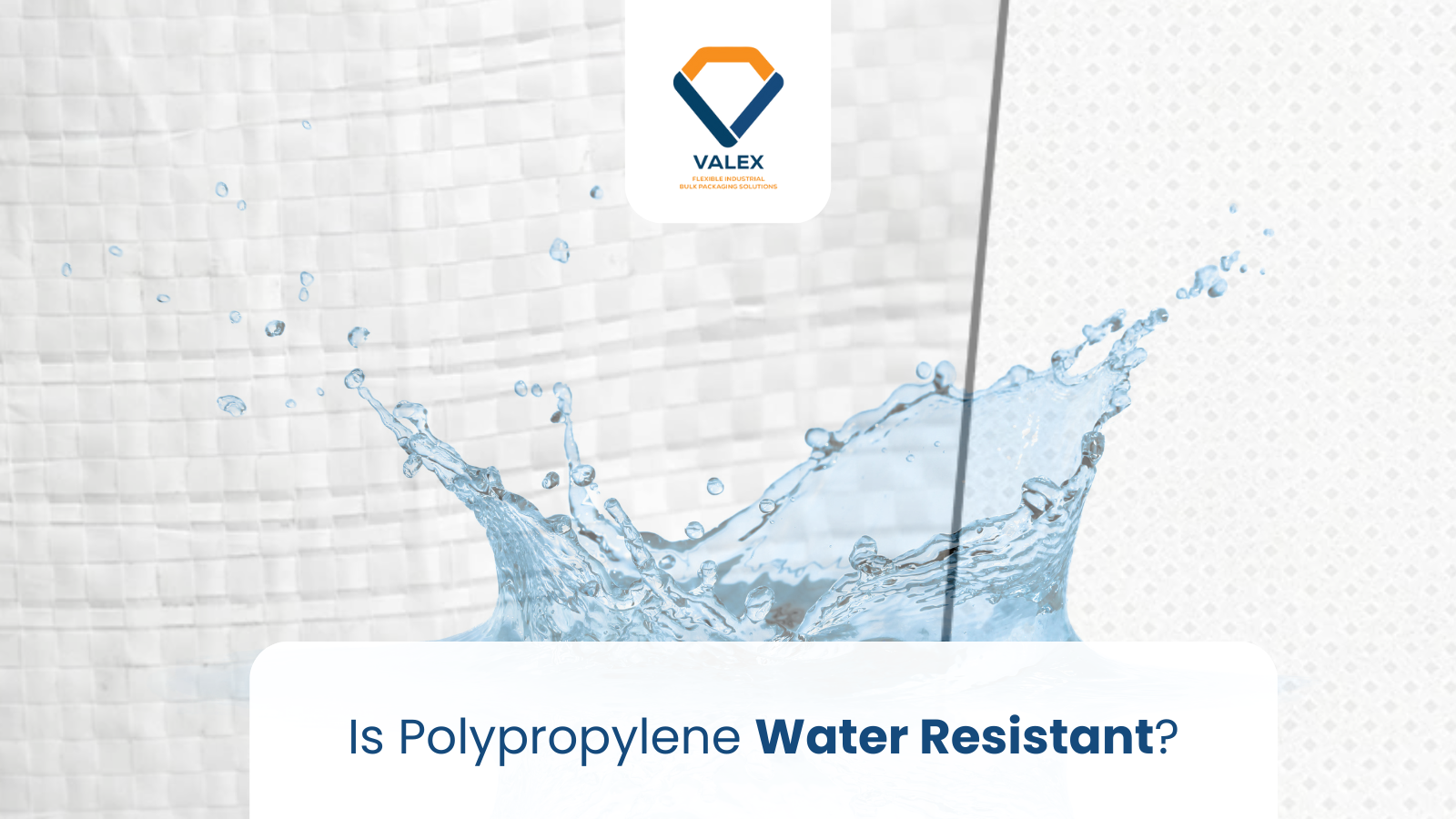Polypropylene is widely used in industries ranging from packaging and textiles to medical and automotive components. But a question that often comes up is: is polypropylene water resistant? The short answer is yes but there's more to the story. In this blog, we will try to understand the water resistance of polypropylene, how it compares to waterproof materials, and whether it's the right choice for your application.
Polypropylene is a type of thermoplastic polymer that is known for its durability, chemical resistance, and lightweight nature. It is often used to make everything from food containers and ropes to woven polypropylene bags and textiles.
So, is polypropylene waterproof by design? Not quite. While polypropylene is water-resistant, it's important to understand the difference between water resistance and waterproofing.
Water Resistant vs. Waterproof

So, is polypropylene material waterproof? No, polypropylene is not truly waterproof in most fabric forms. However, it is highly water resistant, which makes it suitable for many applications involving moisture or splashes.
Polypropylene fabric, especially when tightly woven, provides an excellent barrier against moisture. It does not absorb water, which is why it's commonly used in the manufacturing of bulk bags, medical-grade masks, and geotextiles.
However, if you're wondering, is polypropylene fabric waterproof? The answer depends on how the fabric is processed. Non-woven polypropylene fabrics used in bags or filters may allow minimal water penetration over time, especially at seams. But for most practical purposes, it holds up well in wet conditions.
Yes, polypropylene is really water resistant, and this is one of the reasons it is preferred for outdoor and moisture-sensitive uses. It doesn't wick water like cotton or degrade with exposure to moisture, which enhances its shelf life and usability.
Moreover, is polypropylene fabric impermeable to water? In its pure polymer form (such as films or coatings), polypropylene can be impermeable to water. However, the permeability of polypropylene fabric depends on its weave density and whether it has additional coatings.
A popular question in industrial packaging is: are polypropylene bags waterproof?
So if you're using polypropylene bags for storage or transportation, choosing coated or laminated variants is advisable when moisture protection is a priority.
Thanks to its moisture resistance, polypropylene is widely used in:
If your primary need is water resistance with the added benefits of strength, chemical resistance, and cost-effectiveness, polypropylene is a smart choice. For applications that demand complete waterproofing (like marine gear or rainwear), other materials like PVC or rubber might be better suited.
However, when laminated or coated properly, polypropylene can perform exceptionally well, even in challenging wet environments.
So, is polypropylene water resistant? Absolutely. While not entirely waterproof in all its forms, polypropylene offers a high level of resistance to moisture, making it ideal for various industrial and consumer applications. Whether you're evaluating polypropylene fabric, bags, or packaging solutions, understanding its moisture-handling properties will help you make an informed decision.
If you're looking for durable, water-resistant, and cost-effective then Valex Ventures is the best Polypropylene FIBC bag manufacturer. Polypropylene bags are one of the best materials you can choose, contact us now for any FIBC bag requirement.
1. Is polypropylene waterproof or just water resistant?
Polypropylene is water resistant but not completely waterproof unless coated or laminated.
2. Can polypropylene fabric get wet?
Yes, polypropylene fabric can come into contact with water, but it resists absorption and dries quickly.
3. Are polypropylene bags waterproof?
Standard woven polypropylene bags are water resistant, while laminated or coated versions offer better water protection.
4. Is polypropylene fabric impermeable to water?
Pure polypropylene film can be impermeable, but the fabric form may allow minimal water passage depending on weave and treatment.